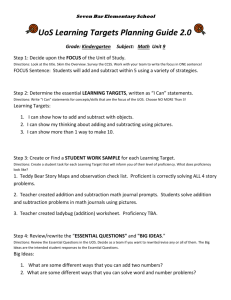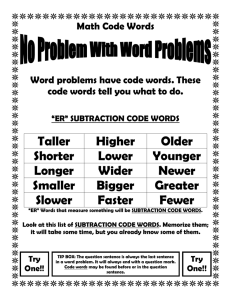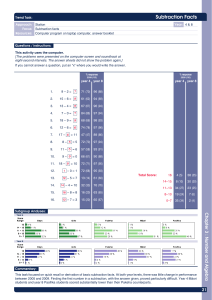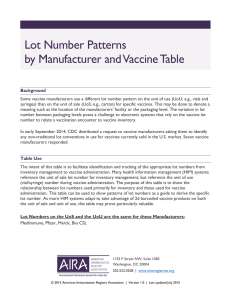Unit 5 Learning Target Plan
advertisement
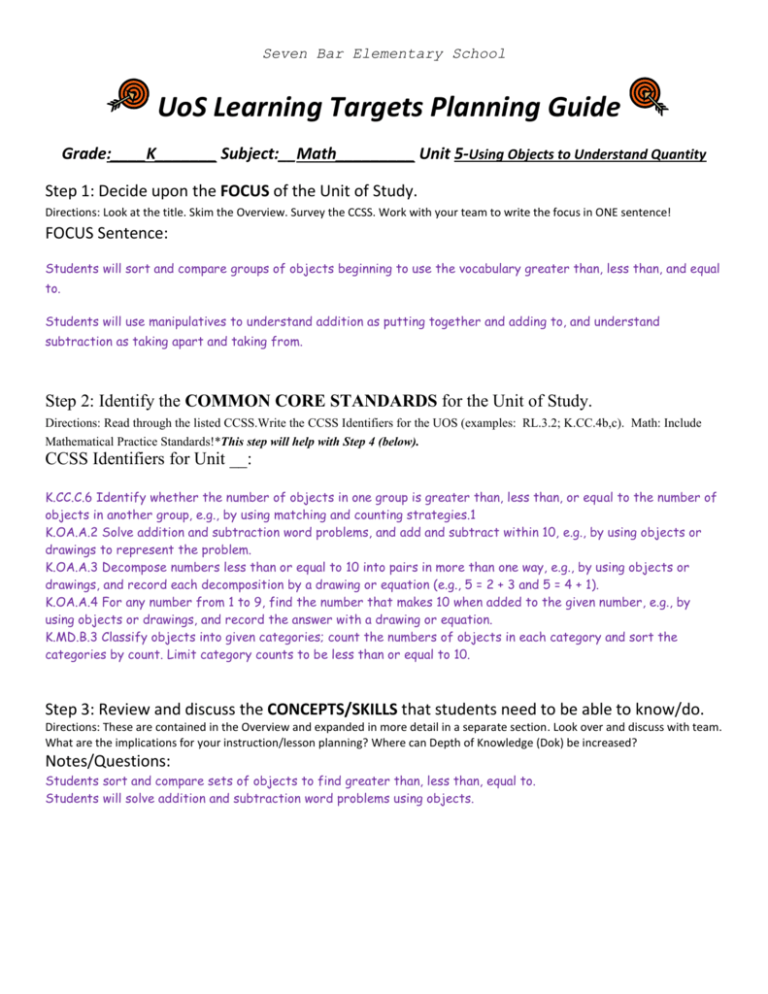
Seven Bar Elementary School UoS Learning Targets Planning Guide Grade:____K_______ Subject:__Math_________ Unit 5-Using Objects to Understand Quantity Step 1: Decide upon the FOCUS of the Unit of Study. Directions: Look at the title. Skim the Overview. Survey the CCSS. Work with your team to write the focus in ONE sentence! FOCUS Sentence: Students will sort and compare groups of objects beginning to use the vocabulary greater than, less than, and equal to. Students will use manipulatives to understand addition as putting together and adding to, and understand subtraction as taking apart and taking from. Step 2: Identify the COMMON CORE STANDARDS for the Unit of Study. Directions: Read through the listed CCSS.Write the CCSS Identifiers for the UOS (examples: RL.3.2; K.CC.4b,c). Math: Include Mathematical Practice Standards!*This step will help with Step 4 (below). CCSS Identifiers for Unit __: K.CC.C.6 Identify whether the number of objects in one group is greater than, less than, or equal to the number of objects in another group, e.g., by using matching and counting strategies.1 K.OA.A.2 Solve addition and subtraction word problems, and add and subtract within 10, e.g., by using objects or drawings to represent the problem. K.OA.A.3 Decompose numbers less than or equal to 10 into pairs in more than one way, e.g., by using objects or drawings, and record each decomposition by a drawing or equation (e.g., 5 = 2 + 3 and 5 = 4 + 1). K.OA.A.4 For any number from 1 to 9, find the number that makes 10 when added to the given number, e.g., by using objects or drawings, and record the answer with a drawing or equation. K.MD.B.3 Classify objects into given categories; count the numbers of objects in each category and sort the categories by count. Limit category counts to be less than or equal to 10. Step 3: Review and discuss the CONCEPTS/SKILLS that students need to be able to know/do. Directions: These are contained in the Overview and expanded in more detail in a separate section. Look over and discuss with team. What are the implications for your instruction/lesson planning? Where can Depth of Knowledge (Dok) be increased? Notes/Questions: Students sort and compare sets of objects to find greater than, less than, equal to. Students will solve addition and subtraction word problems using objects. Step 4: Determine the LEARNING TARGETS, written as “I Can” statements. Directions: Write “I Can” statements for concepts/skills that are the focus of the UOS.Suggested resource: Google “common core I can statements”. Learning Targets: I can use math words to compare groups of objects I have sorted. I can put objects together to see how many I have in all. I can take objects away from a group to see how many are left. Step 5: Review/rewrite the “ESSENTIAL QUESTIONS" and "BIG IDEAS.” Directions: Review the Essential Questions in the UOS. Decide as a team if you want to rewrite/revise any or all of them. The Big Ideas are the intended student responses to the Essential Questions. Big Ideas: How can you compare the quantities in two or more groups? What are some of the strategies you could use to solve word problems? What are some ways you can break apart a number of objects into smaller sets of objects? Step 6: Get a COMMON FORMATIVE ASSESSMENT (CFA). Directions: A CFA is an assessment given by the collaborative team toward the end of the unit, the results of which will be analyzed by the team so as to make plans together for corrective instruction, interventions, enrichment, and support. The CFA should be at a high DOK (Depth of Knowledge) and should address the Learning Targets from Step 4. Teams can use assessments provided by the district, if available, or they can create their own. Common Formative Assessment (use another sheet of paper, if necessary): Teddy Bear Park Assessment Step 7: Create a SCORING GUIDE for the Common Formative Assessment. Directions: Include specific criteria describing levels of student proficiency. Avoid subjective terms like “some, many, most, appropriately, etc. Directly match the scoring guide criteria to the task directions. Scoring should be valid and reliable. Scoring Guide (use another sheet of paper, if necessary): Addition 1 Demonstrates correct addition of one story problem or is unable to count sets of objects 2 Demonstrates correct addition of two story problems 3 Demonstrates correct addition of three story problems 2 Demonstrates correct subtraction of two story problems 3 Demonstrates correct subtraction of three story problems Subtraction 1 Demonstrates correct subtraction of one story problem or is unable to decompose sets of objects Step 8: Write ESSENTIAL QUESTION/BIG IDEA DIRECTIONS and create a scoring guide. Directions: Plan for students to respond to the unit’s Essential Questions with the Big Ideas stated in their own words. Big Ideas Scoring Guide (use another sheet of paper, if necessary): How can you compare the quantities in two or more groups? I can count how many are in the sets and which has more, less or the same. What are some of the strategies you could use to solve word problems? I can use objects to show how many and add more and take them away. What are some ways you can break apart a number of objects into smaller sets of objects? I can take one away from the group, two away from the group, three away from the group and see how much is left each time. See Step 7 and classroom observations
